COVID-19 news and updates
Brighter days: St. Luke’s wrangled winter with hope on the horizon
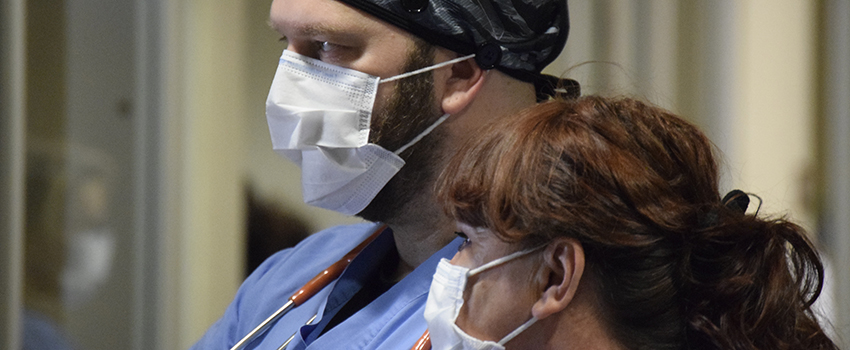
It was not easy to see at the time, but hope was ahead for those fighting the COVID-19 pandemic.
As challenging as the novel coronavirus was a year ago, winter was a true test for even the toughest caregivers.
St. Luke’s physicians, respiratory therapists, nurses and other medical professionals had spent eight months adjusting to multiple major shifts in care delivery. The flow of very sick patients was steady. Families, including their own, were consumed with worry. Exhaustion, mental fatigue and sadness were prevalent.
“We’ve had a lot of losses, a lot of heartache,” Dr. Sindy Byington, a hospitalist at St. Luke’s Magic Valley, recalled.
“We’ve seen families be broken over this, not just with loss of life, but loss of time, loss of touch.”
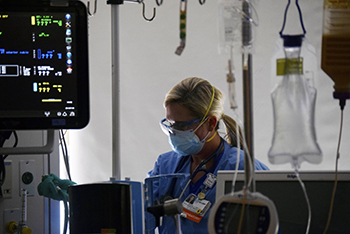
From Nov. 1 to Dec. 22, St. Luke’s hospitals had at least 89 COVID-positive patients. The numbers had never been higher. In that span, approximately a dozen days saw at least 20 deaths each day from the virus.
Many St. Luke’s clinicians carry their own vivid, often sorrowful, profoundly moving memories of encounters they had with patients and family members throughout this time. Quite often, given the danger of transmission and further spread of the virus, team members filled in for loved ones – or tried to.
“I remember … I held my own phone in front of this patient so his partner of 20 years could see him as he died,” said Heather Callen, a MICU/SICU nurse at St. Luke’s Boise.
“It was awful. And that is what we dealt with for months.”
“We had to be that family for them,” said Isaac Jimenez, an assistant nurse manager at St. Luke’s Boise.
“… We were the last ones they ended up seeing.”
“History in the making”
Amid the grief and fatigue, new treatments emerged to help keep some COVID-19 patients out of the hospital. And an unprecedented leap in medical research and science and unheard-of pharmaceutical production schedules began to shape a promise of major relief in the form of safe, effective vaccines.
St. Luke’s gave its first doses of the Pfizer vaccine Dec. 18 to frontline workers, with the Moderna vaccine coming soon after. A third, a single-dose shot from Johnson & Johnson, arrived this month.
Early vaccination clinics were scenes of jubilation. Team members arriving with coolers of vaccine were greeted with applause and tears of relief.
“The pride and joy that we have been experienced around the vaccine … I don’t think I’ll ever forget that,” said Dr. Michaela Schulte, an infectious disease specialist at St. Luke’s Nampa.
“It was history in the making, incredibly emotional.”
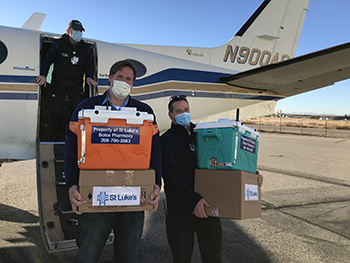
As vaccine development progressed, St. Luke’s moved quickly and creatively to make sure the organization was prepared.
Supply was expected to vary, but there were also varying standards for the safe storage and use of the different products. The Pfizer vaccine had to be stored at an ultra-cold minus-100 degrees Fahrenheit. In August, a full four months before taking first deliveries, St. Luke’s was on the way to securing the needed freezers.
“Logistics was on it,” said Dr. Laura McGeorge, medical director at St. Luke’s Boise. “I was incredibly impressed with how much hard work it took to get us ready.”
In January, vaccine began to be administered to high-risk groups. On Jan. 23, the first St. Luke’s dedicated COVID-19 vaccine clinic gave more than 1,500 doses.
Vaccination opportunities have repeatedly been refined, adjusted and improved. Recently, a dedicated vaccine clinic was established at St. Luke’s Plaza in downtown Boise. Providers and team members who are not clinically trained but who have been moved to step in have often volunteered their time to help get “shots into arms.”
As of March 21, St. Luke’s had administered more than 78,000 doses.
“The vaccine has given us a lot of hope … it’s a chance for us to take a breath, finally,” Byington said.
“We were going at full speed, 110 percent of our energy, for so long.”
In the three months since the height of the pandemic, COVID-19 numbers have made a return to normal look within reach. COVID positivity rates that hovered around 20 percent in late December, now sit at closer to 4 percent. Since March 1, no more than 24 patients admitted in a single day at St. Luke’s hospitals have tested positive for COVID-19; the highest number of COVID patients St. Luke’s saw was Dec. 4, when there were 166 patients hospitalized for treatment of COVID-19 illness.
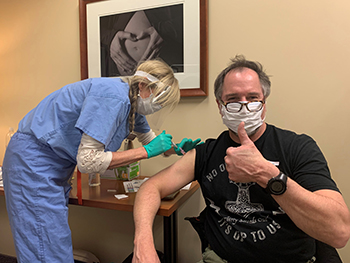
Dr. McGeorge chalks the reduction up to more knowledge of the virus, increasing immunity as members of the community have had exposure and developed antibodies, the use of precautions – physical distancing, the use of face coverings and hand hygiene – and now, the vaccine rollout.
She hopes that some may correlate the lower numbers with the vaccine’s distribution and move to be vaccinated, overcoming hesitancy.
Varying supplies and demand have put the spotlight on some historically unsung members of the St. Luke’s team. The “Connect” call team, for example, has fielded thousands upon thousands of calls from patients and worried members of the public during the pandemic.
“Amazing work,” Dr. McGeorge said. “It’s never-ending COVID work that wasn’t there a year ago, on top of what they regularly did previously.”
“One day, we are making new patient appointments, the next week, we are taking on 700 calls on the vaccine line,” said Belinda Kinyon, a patient access specialist at St. Luke’s Magic Valley.
“It’s remarkable how versatile this team can be when we all work together.”
“Don’t throw in the towel yet”
There is plenty of reason for optimism, but the pandemic is most definitely not over.
Eastern Idaho has become a hotspot in recent weeks, straining ICUs, and COVID-19 variants could bring unexpected challenges, though medical experts believe that the more vulnerable people who are vaccinated, the less likely it is that people will need to be hospitalized.
“Don’t throw in the towel yet,” St. Luke’s Chief Physician Executive Dr. Jim Souza said.
“I hope (the community) isn’t in a total rush to get back to normal, and I know how hard a prescription that is. What got us here is normal … I hope at the individual level there is some reflection.”
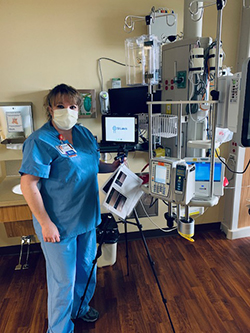
March 26 marks a year since the first COVID-19 death in Idaho. Nearly 2,000 have followed. But with continued focus, St. Luke’s and its communities will come through this unprecedented health crisis. The pandemic has led to multiple innovations in care that health system planners and leaders know will continue to serve St. Luke’s patients far into the future; digital solutions are one example.
“We really advanced telehealth,” Dr. Souza said. “We can still care for people through cables and electrons. That only is going to continue to develop.”
Other lessons learned over the last year also will continue for a long, long time. Face coverings, for example, may become less prevalent over time, but may stay more visible than in years past – and continue to be of benefit, pandemic or no pandemic. Dr. McGeorge pointed to this year’s flu season, kept to a minimum by precautions including face coverings, and noted, “We had incredibly tiny influenza numbers this winter.”
Lengthy, complicated care of COVID “long-haulers,” people continuing to show effects months after being infected, is expected for the indefinite future. No one knows just how long those may continue. And in some cases during the pandemic, people skipped checkups and basic preventive care, meaning physicians and their care teams may have missed opportunities to help them address health issues that now may need a more intensive approach.
It has been the most trying year in memory for almost everyone, especially those in health care. The impact of the pandemic on care providers will be another lingering legacy, and Dr. Souza said the stress is likely to lead to some turnover.
But as the St. Luke’s team looks forward to less loss and a return to a more normal sense of life and work, there is a great deal of pride in what was done – and anticipation of what’s ahead.
“For the entire year, people worked 10, 11, 12, 13 days in a row, and it was really, really difficult,” Jimenez said.
“We could not have done it if we didn’t have the team we did, the management we did.”
“This has changed St. Luke’s,” Dr. Souza said.
“It’s changed health care."
Turning the corner on COVID-19, heading in the right direction, it could not have been possible without the community's support. Please watch the video below, thanking everyone that was in this together.
About The Author
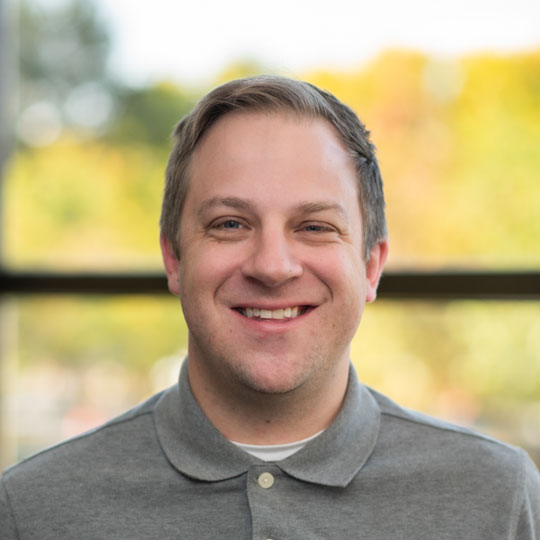
Dave Southorn works in the Communications and Marketing department at St. Luke's.

